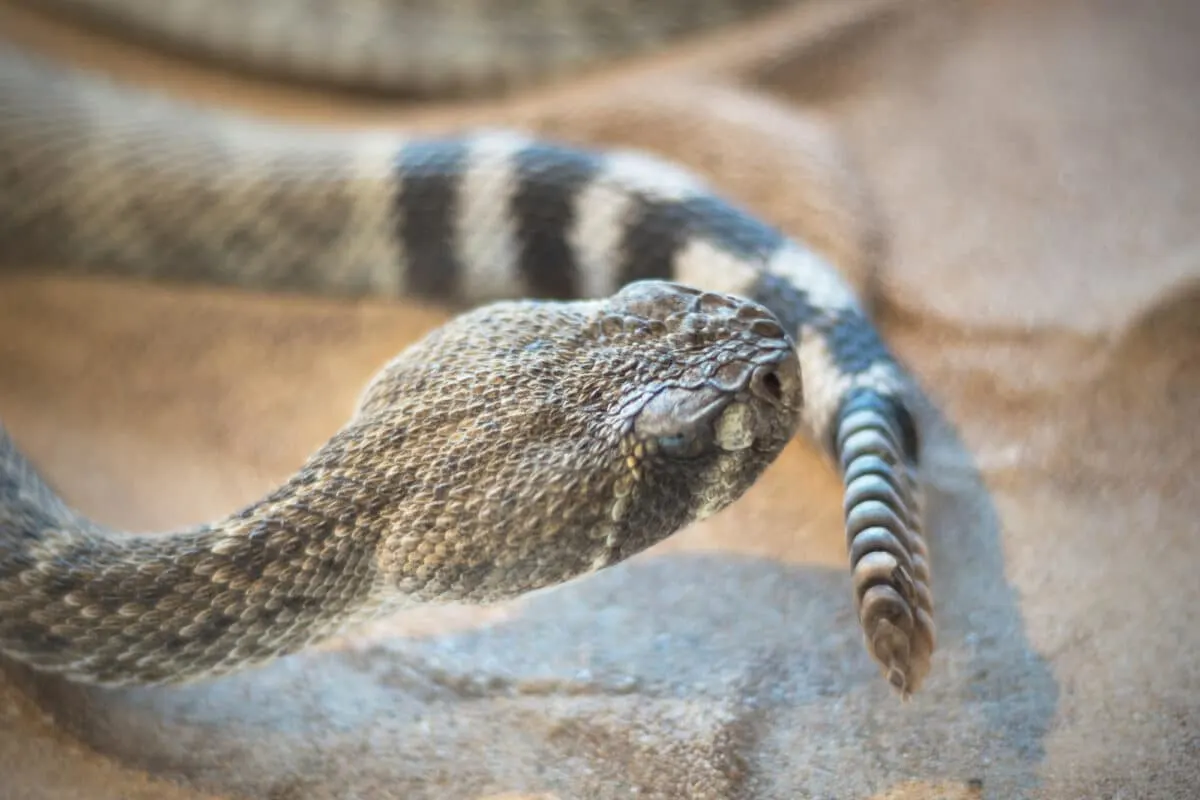Have you ever heard the folk tale about Roadrunner outrunning a rattlesnake? In this fascinating and unique story, two desert inhabitants, a roadrunner bird and a rattlesnake go head to head in an epic race through the arid terrain of the American Southwest.
Being just a traditional fable with colorful characters, the myth offers some valuable lessons on overcoming obstacles no matter how challenging they appear.
To further illustrate that point, we will closely examine what makes this myth so remarkable with its real-life implications for surviving difficult situations.
So strap yourself in for an adventure; let’s explore together how Roadrunner can teach us all something about perseverance!

Jump ahead to any section below.
Comparison Table
| Aspect | Roadrunner | Rattlesnake |
| Appearance | Small, slender bird with a distinctive crest on its head and a long, thin tail. Feathers are brown and white. | Venomous snake with a triangular head, a thick body covered in scales, and a distinctive rattle on its tail. Coloration varies but usually has a pattern of brown, tan, and black. |
| Adaptations | Fast runner, with long legs and a lightweight body that allows it to move quickly across the ground. Excellent vision and hearing. | Venomous fangs, heat-sensitive pits on its face that detect prey, and the ability to unhinge its jaw to swallow large prey whole. |
| Habitat | Lives in deserts, arid grasslands, and scrubland throughout the southwestern United States and Mexico. | Found in a variety of habitats, including deserts, forests, and grasslands, throughout the Americas. |
| Diet | Carnivorous, eating a variety of prey including insects, lizards, snakes, and small mammals. | Carnivorous, preying on small animals such as rodents, birds, and other reptiles. |
| Behavior | Solitary animals, but may form monogamous pairs during breeding season. Known for its distinctive “meep-meep” call. | Generally solitary, but may gather in large numbers during hibernation or mating season. |
| Threats | Predators include hawks, owls, and other large birds of prey, as well as snakes. | Threatened by habitat loss, hunting, and road mortality. |
Overview Of The Roadrunner’s Natural Ability To Outrun A Rattlesnake
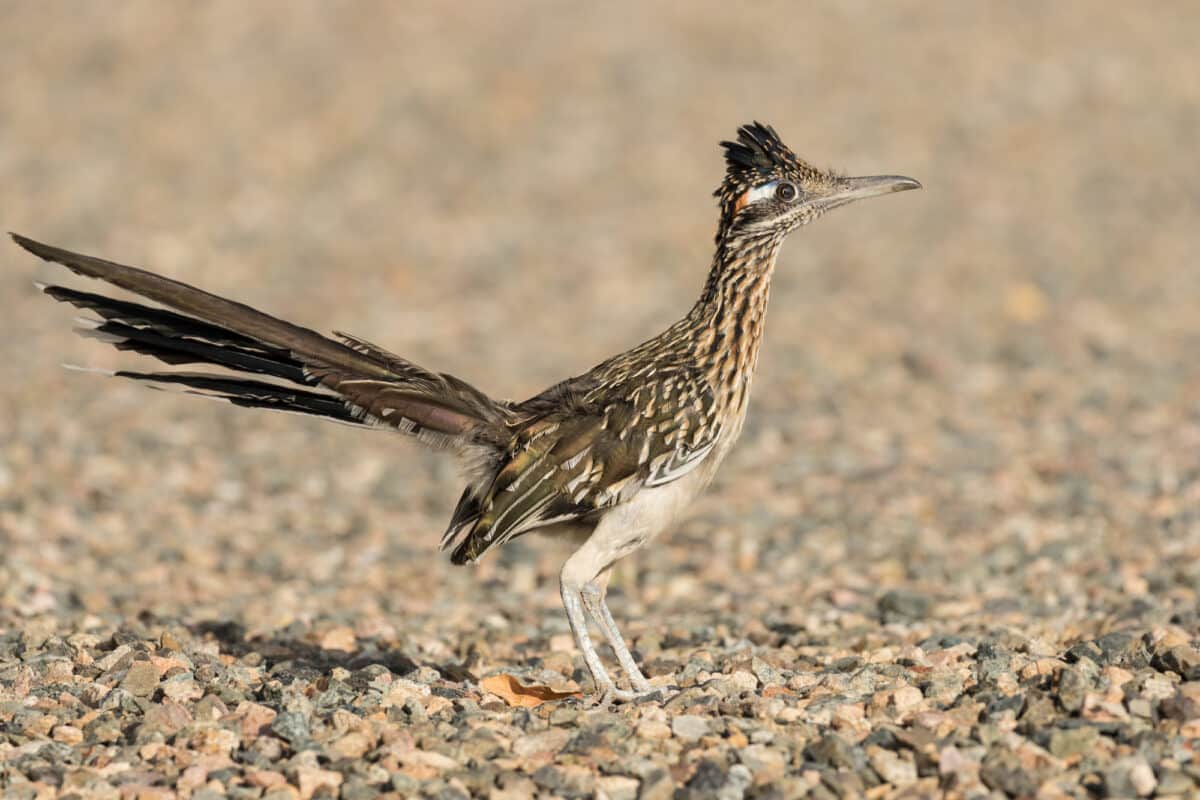
The Roadrunner is a fascinating bird that has become a cultural icon in many parts of the world thanks to its incredible natural ability to outrun a rattlesnake. These birds are known for their swift movements and agility, which allows them to cover up to 15 feet in a single bound.
Also, Roadrunner’s ability to dart and zig-zag quickly makes it nearly impossible for predators to catch. Interestingly, these birds can also withstand the venom of a rattlesnake. Their stomachs produce acids that neutralize the toxins, and they are even known to eat venomous snakes as part of their diet.
Overall, the Roadrunner’s natural ability to outrun and defend against rattlesnakes is an impressive feat that speaks to the bird’s remarkable adaptation and survival skills.
Check out Roadrunner Vs Rattlesnake: Who Would Win in a Fight?
Common Characteristics And Habits Of Roadrunners And Rattlesnakes
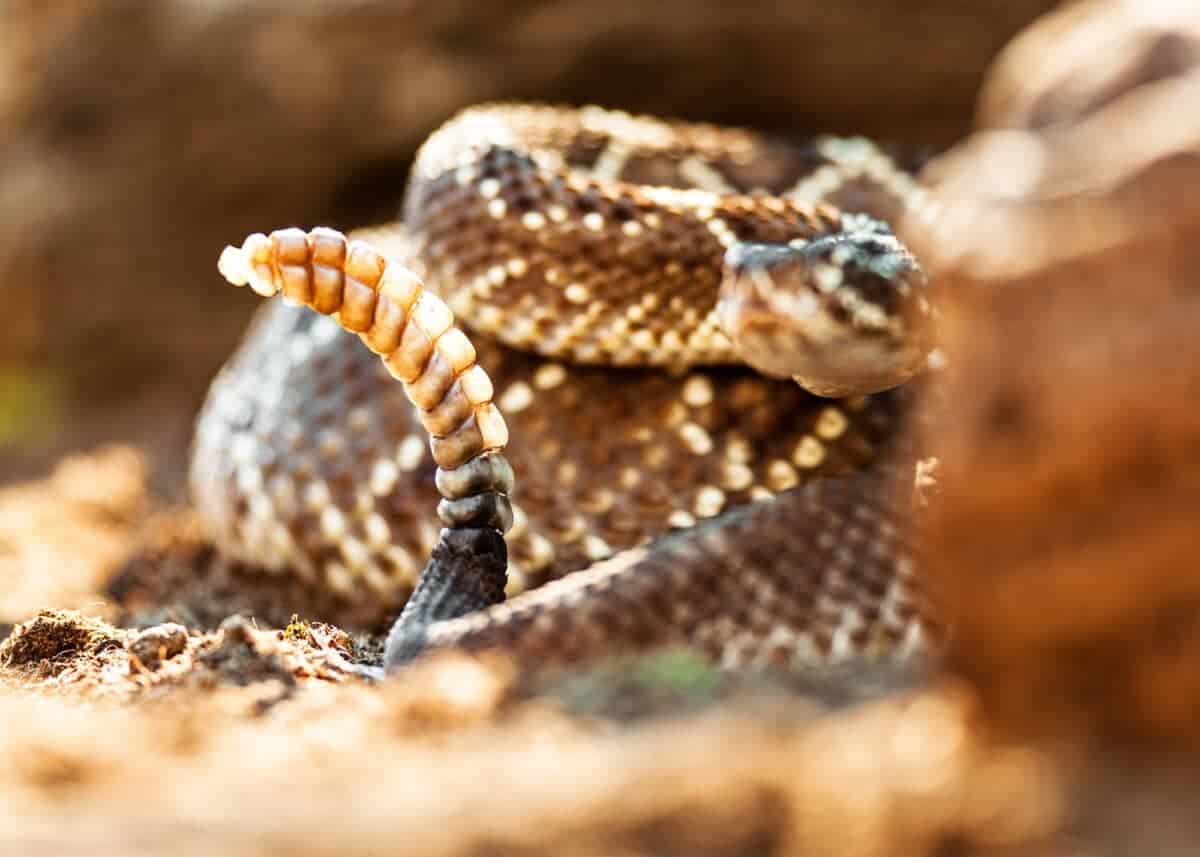
Both characters display exceptional speed and agility in the Roadrunner and Rattlesnake mythological tale, making for an exciting race through the desert.
While they might differ vastly in their physical appearance and diet, they share some common characteristics and behaviors that are worthy of exploration.
Check out: Moose Stands Against A Pack Of Wolves.
Physical Traits
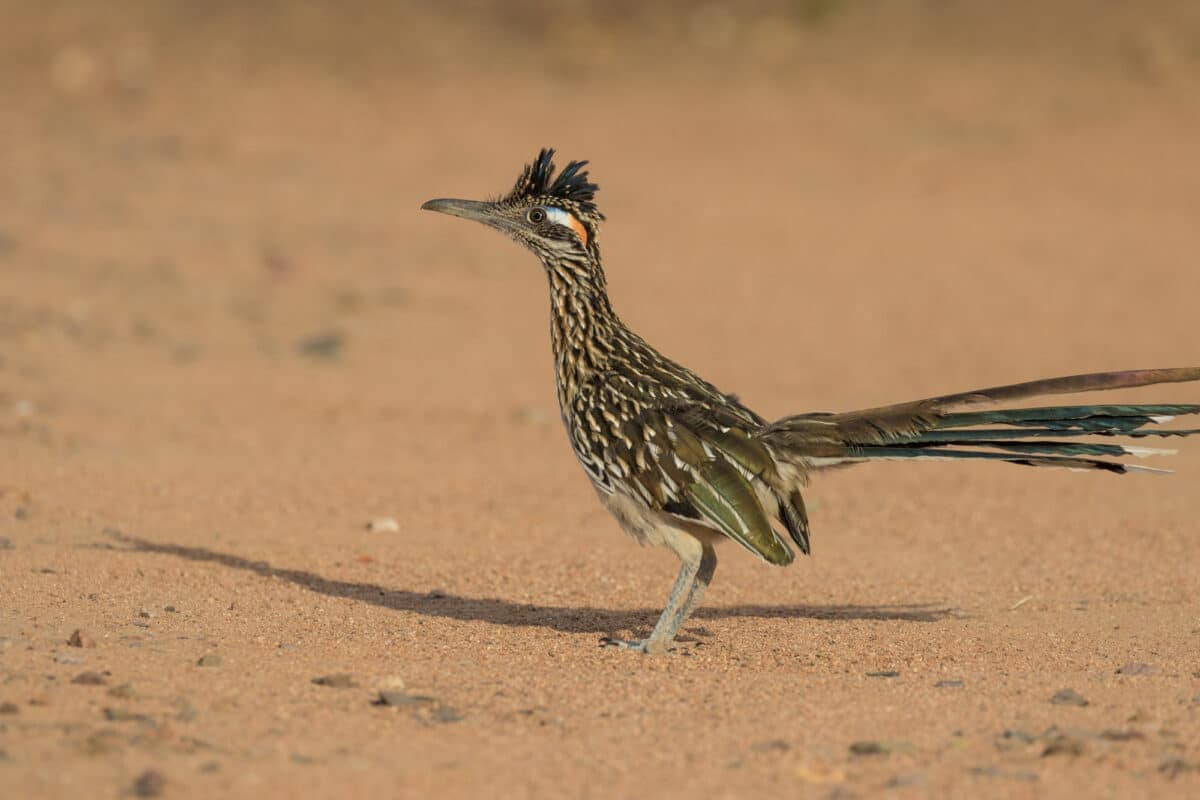
The American Southwest is known for its association with roadrunners and rattlesnakes, commonly found animals in the region. Roadrunners are known for their distinctive appearance: dark brown and white speckled feathers, long legs, and strong beaks. They are also quite small, measuring only around 20 inches in length.
On the contrary, rattlesnakes exhibit a considerably greater size and width, with a maximum height of 6 feet. They possess distinctive markings and feature a recognizable rattle at the tip of their tail.
Check out: The Roadrunner Outruns A Rattlesnake.
Habitat

Roadrunners and rattlesnakes are perfectly adapted to their desert environments. Roadrunners are highly adaptable and can be found in arid and semi-arid areas, often near washes, streams, or other water sources.
They are opportunistic hunters and consume a variety of prey, including lizards, insects, snakes, rodents, and small birds. Conversely, rattlesnakes are strictly carnivores and depend solely on a diet of prey items, including small mammals, birds, and lizards.
A wide variety of habitats, including deserts, grasslands, forests, and swamps, are known to be inhabited by them.
Check out: Domestic Cat Takes On A Wild Fox.
Behavioral Traits
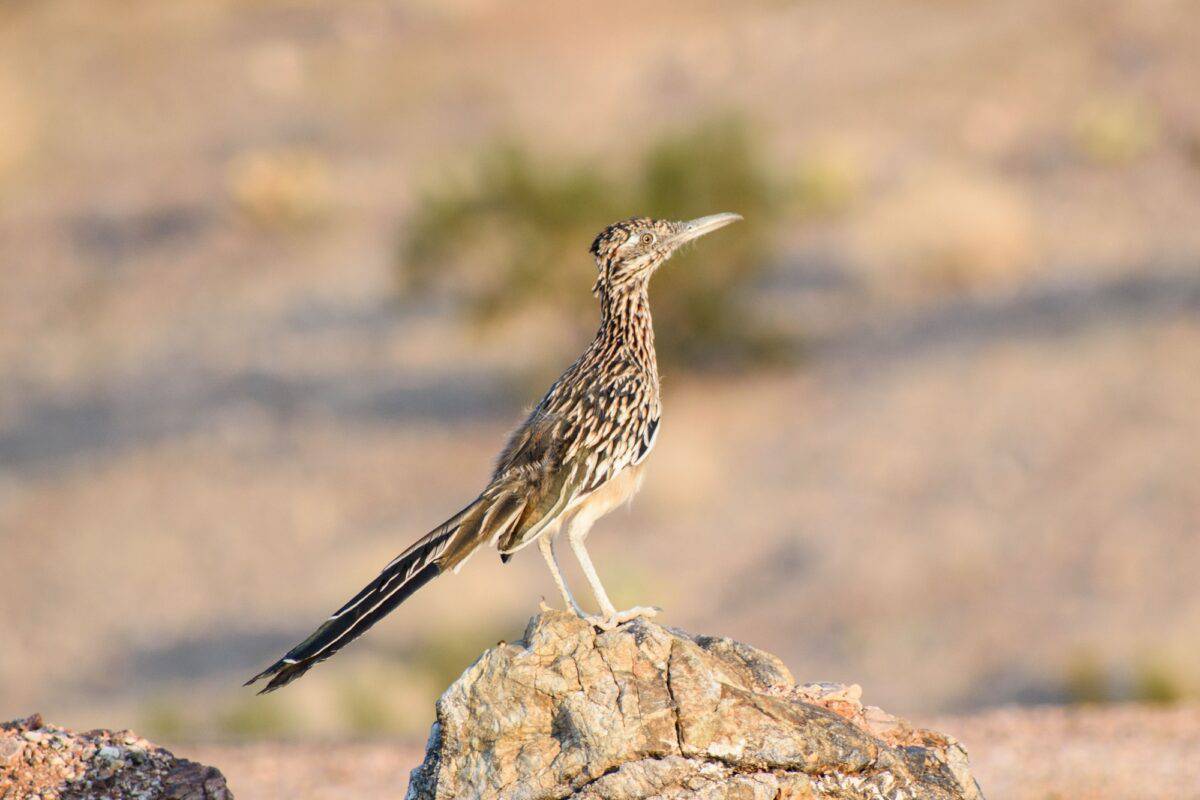
Roadrunners are renowned for their incredible running speeds, which they use to escape predators such as coyotes and foxes. They can run up to 17 miles per hour, using their strong legs and agile bodies to change direction quickly. In contrast, rattlesnakes rely on their venomous bites to incapacitate their prey. They have a highly evolved sense of smell and heat-sensing organs that they use to hunt for food and detect potential predators.
Check out: Moose Stands Against A Pack Of Wolves.
Survival Strategies
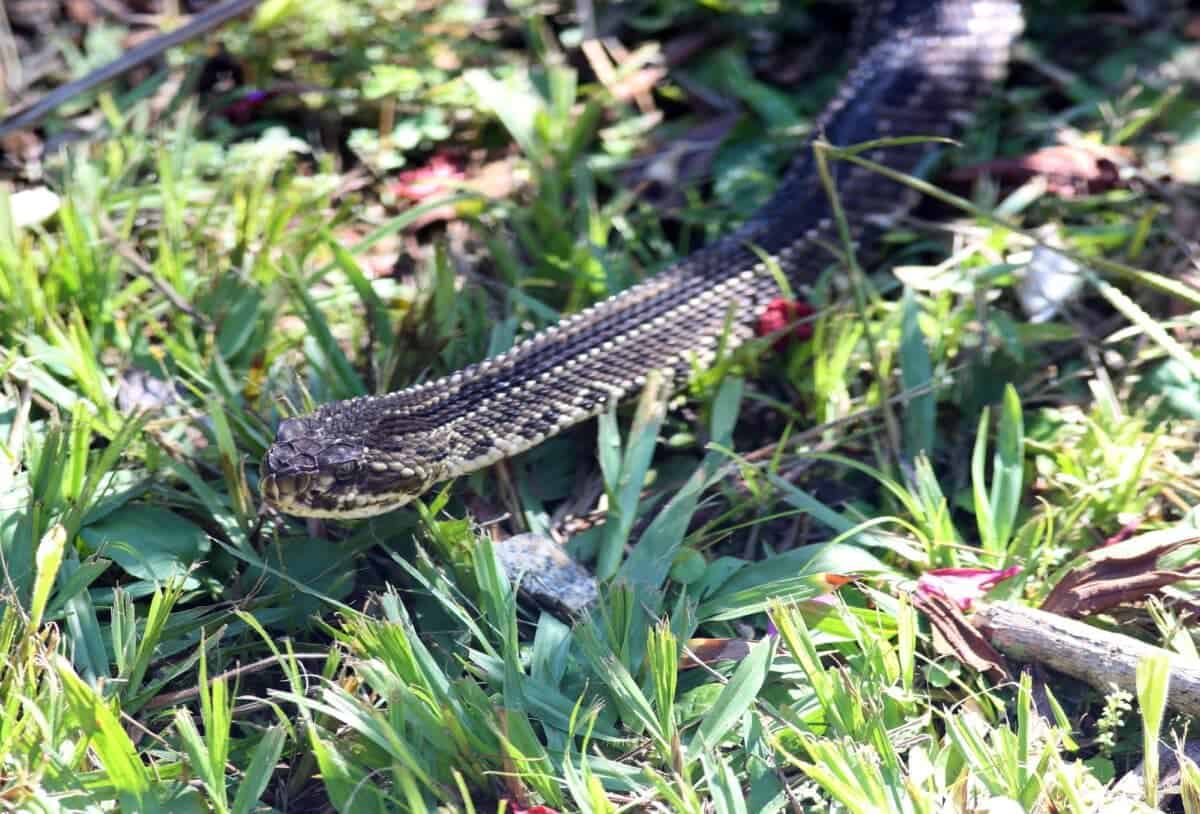
Despite being physically different, roadrunners and rattlesnakes have evolved distinct survival strategies enabling them to thrive in harsh desert environments.
Roadrunners have exceptional eyesight and hearing, which they use to detect and escape from predators. They are opportunistic and easily adapt to new food sources or environmental changes.
Meanwhile, rattlesnakes have evolved highly advanced defense mechanisms to protect themselves from predators, including their venomous bites and tails’ rattling sound as a warning sign.
Roadrunners and Rattlesnakes are two of the most iconic animals in the American Southwest. While they look and behave differently, they share common characteristics and habits that have enabled them to survive in extreme desert environments.
Understanding their unique physical and behavioral traits can teach us valuable lessons about survival and overcoming obstacles, no matter how exhausting they appear.
Tips For Staying Safe When Encountering Either Animal
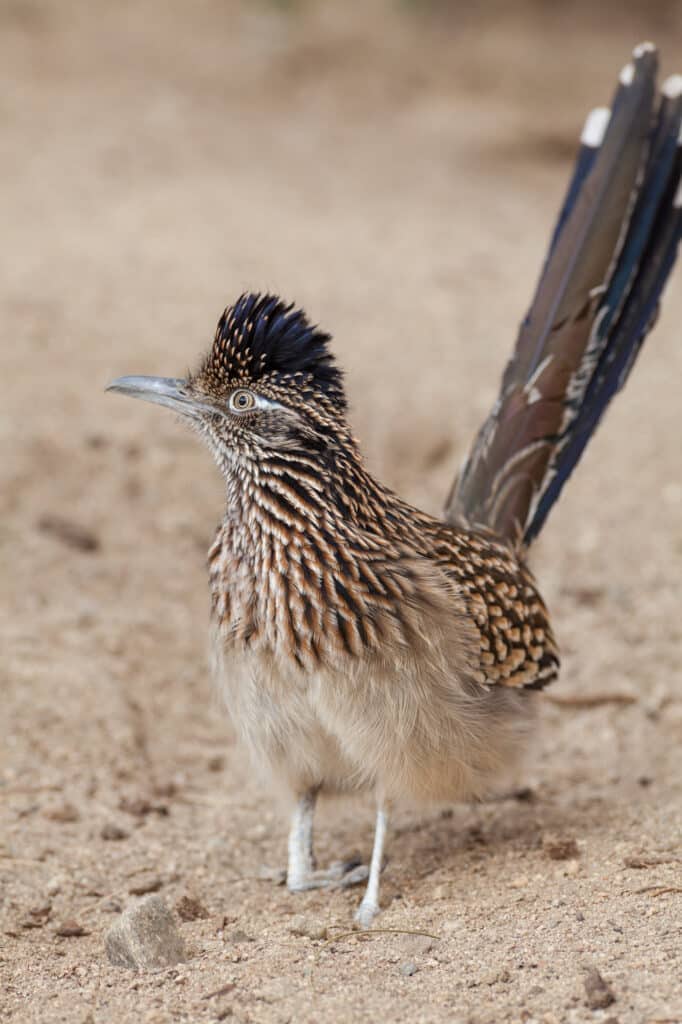
If you encounter a roadrunner or rattlesnake, keeping yourself safe and avoiding potential danger is essential. A primary concern is maintaining a safe distance to minimize unwarranted interactions.
Roadrunners and rattlesnakes are known to be quick, so it’s best to stay close. If you encounter a roadrunner, it’s important not to chase or provoke them, as they may become aggressive.
Similarly, if you spot a rattlesnake, staying calm and still is a wise choice, as any sudden movements may startle the snake and lead to an attack.
Therefore, always be aware of your surroundings, wear appropriate clothing and footwear, and pay close attention to any warning signs or cues that may signal the presence of these animals.
Following these tips can ensure a safe encounter with a roadrunner or a rattlesnake.
Check out What Do Roadrunners Eat?
Examining What Makes Roadrunners Uniquely Adapted To Outrunning A Rattlesnake

Roadrunners may look like ordinary birds, but they are anything but ordinary. These birds have also adapted to life in the desert and have unique skills to survive and thrive.
Moreover, the roadrunner’s capacity to outrun a rattlesnake is a highly captivating characteristic. This might seem impossible, but the roadrunner has evolved incredibly fast and agile.
Furthermore, its long legs give it a stride that spans up to three feet, and its lightweight, aerodynamic body allows it to move quickly and efficiently.
In addition, the roadrunner has a keen sense of sight and can detect the slightest movements of its prey, even from great distances. Overall, these adaptations make the roadrunner a formidable opponent for any predator, including the deadly rattlesnake.
So, examining what makes roadrunners uniquely adapted to outrunning a rattlesnake is fascinating and gives us a glimpse into nature’s complex and endlessly fascinating world.
Comparing The Speed And Durability Of The Animals

Regarding speed and durability, the roadrunner and the rattlesnake are two animals that are often compared.
Firstly, roadrunners are known for their incredible speed, capable of running up to 20 miles per hour. Their lean bodies and long legs also make them agile and quick, allowing them to catch their prey easily.
On the other hand, rattlesnakes are known for their toughness and durability. Moreover, with their thick, scaly skin and venomous bite, they can survive in some of the harshest environments.
Overall, both animals have their own unique set of skills that make them formidable in their respective habitats. So, comparing their abilities can give us a better understanding of how different species have adapted to survive in their environments.
Safety Measures For Running Away From An Aggressive Rattlesnake
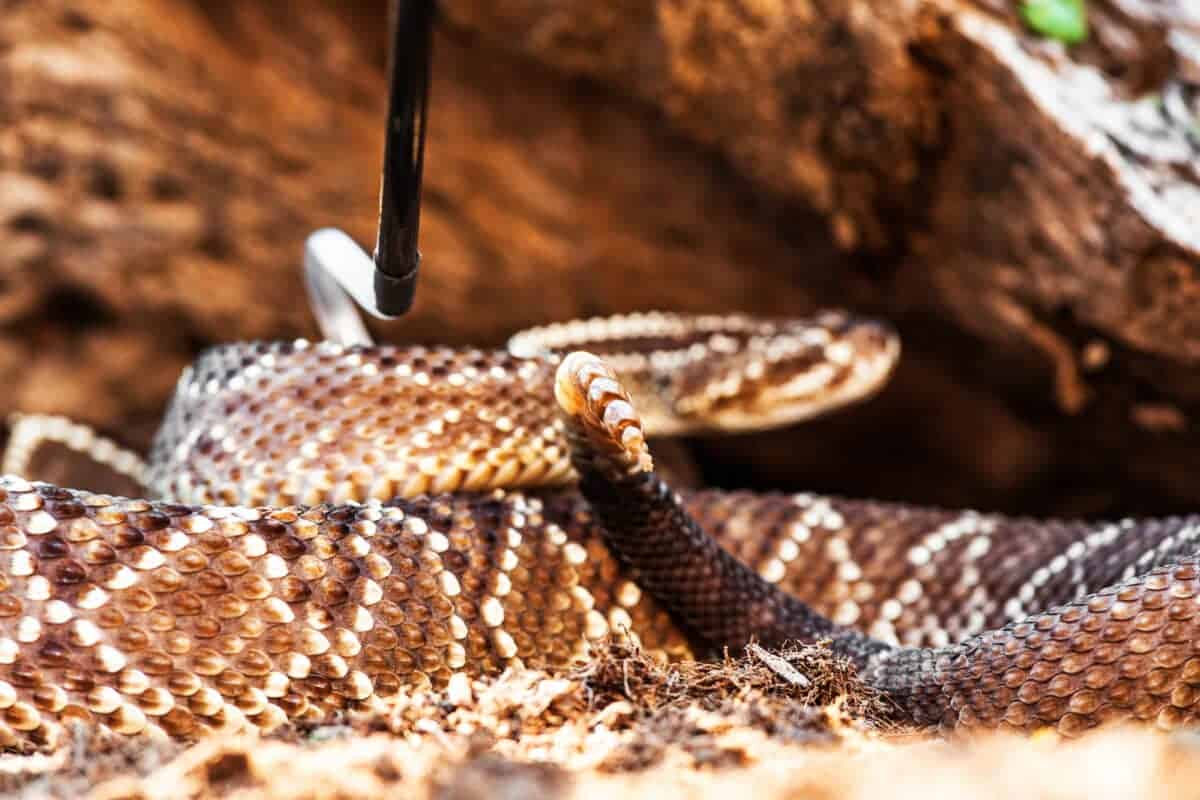
Rattlesnakes are no joke, and encountering one can be a scary experience. However, if you ever find yourself in a situation where you need to run away from an aggressive rattlesnake, it’s important to act quickly and calmly.
The first step is to create distance between yourself and the snake. Remember that rattlesnakes can strike up to a distance of two-thirds of their body length, so maintain a distance of at least six feet.
Avoid turning your back on the snake, which can provoke an attack. Instead, side-step slowly and steadily away from the snake. Then, if possible, try to detour around the snake to avoid a confrontation.
Overall, remember to always watch the snake’s movements, as they are very quick. By following these important safety measures, you can avoid getting bitten by a rattlesnake.
Key Points
| The Roadrunner is a fascinating bird that has become a cultural icon in many parts of the world thanks to its incredible natural ability to outrun a rattlesnake. |
| These birds are known for their swift movements and agility, which allow them to cover up to 15 feet in a single bound. The Roadrunner’s ability to dart and zig-zag quickly makes it nearly impossible for predators to catch. |
| Roadrunners are known for their distinctive appearance: dark brown and white speckled feathers, long legs, and strong beaks. They are also quite small, measuring only around 20 inches in length. On the contrary, rattlesnakes exhibit a considerably greater size and width, with a maximum height of 6 feet. They possess distinctive markings and feature a recognizable rattle at the tip of their tail. |
| Roadrunners are known for their incredible speed, capable of running up to 20 miles per hour. On the other hand, rattlesnakes are known for their toughness and durability. |
| Overall, the Roadrunner’s natural ability to outrun and defend against rattlesnakes is an impressive feat that speaks to the bird’s remarkable adaptation and survival skills. |
Bottomline
Overall, the Roadrunner guide above teaches us a timeless lesson – never give up, no matter how tough the odds might look. From hustling forward in the face of adversity to utilizing powers of improvisation and creativity, there are so many lessons we can draw from this enduring myth.
Therefore, let us take those lessons, put them into practice, and continue reaching for success in all aspects of our lives. Regardless of obstacles, it’s important to remember that anything can be accomplished with enough hard work and perseverance.
Overall, take away these timely insights shared by our desert friends today, and always keep moving no matter what!
So why wait any longer? Join Roadrunner on this enlightening journey, after all, you never know where it might lead you!
If you enjoyed this article check out our related articles below!
Next up: Discover a Lemming Confronting A Snowy Owl, Unveiling The Longest Snake In the World, and The Underdog Fight: Dachshund Confronts A Mountain Lion.
Join our Forum for free today!

- Huge Pet Bison Breaks Into House - July 22, 2024
- Giant Black Bear Surprises Beachgoers by Emerging from the Ocean in Florida - July 22, 2024
- Brave Man Plays Instrument While Huge Bear Caresses His Shoulder - July 22, 2024

